Imagine that you just stayed up very late last night studying for a big test. You focused all of your energy on memorizing as much information as you could. You drank coffee and energy drinks to keep yourself awake and finally crashed in the wee hours of the morning. Then when you went to take your test, you felt tired, frazzled and ended up forgetting half of what you had studied. Sound familiar?
Well, what if you were to discover a better way to learn information, and remember it for a much longer period of time? What if you not only memorized facts and descriptions, but actually understood them?
Here are 5 tips that may help you learn to study more effectively.
Tip #1: Smarter, not Harder
Knowing how to study is the first step in successful learning. Things like having a comfortable work space can be one part of your plan. But it’s not the only place you can study. Some people believe that they need to set hours of time aside to sit down, read, and memorize all the information they’re trying to learn. But this method isn’t really very effective. Your brain becomes tired. The information can become scattered. And you can end up with not much to show for all of your hard work.
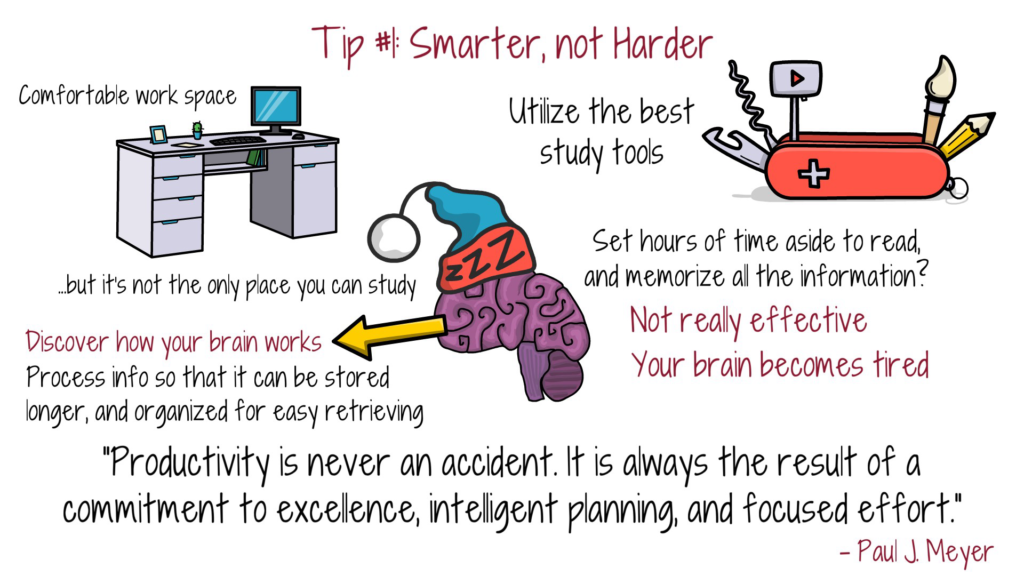
Learning some techniques that may be new to you can be the path to greater success. By discovering how your brain works you can set up your study time to maximize the natural tendencies for learning and storing information. The idea is to process information so that it can be stored longer, and organized for easy retrieving. Utilizing the best study tools available can put you on the path to better success.
Paul J. Meyer, founder of Success Motivation Institute, stated,
“Productivity is never an accident. It is always the result of a commitment to excellence, intelligent planning, and focused effort.”
Tip #2: Use Spaced Repetition Techniques
Research shows that spaced repetition is the best way to learn anything. By actively recalling something in spaced intervals, your brain can reinforce the connections that help you to remember things. In comparison, when you study passively, your brain doesn’t process it in the same way. If you are reading a textbook, making some notes or watching a video multiple times, you may notice the information at the time, but it can be quickly dismissed. In order to move it into long term memory storage, you may need to take a different route.
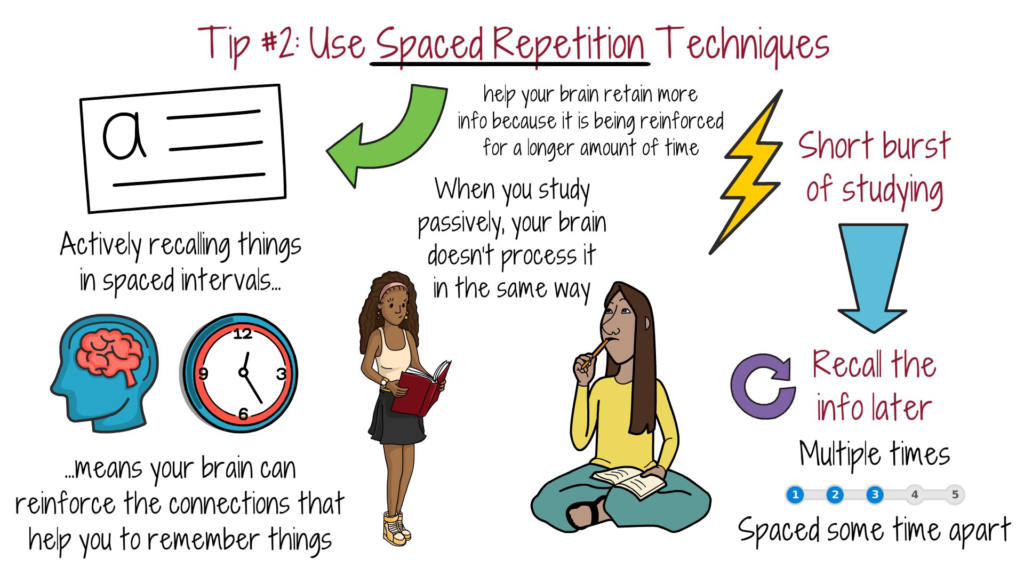
Short bursts of studying, followed by recalling the information later has been shown to produce better long term effects. The main thing is to re-test yourself with active recall, multiple times, spaced some time apart. The amount of time between can be based on several factors, such as the difficulty of the information, how much of it is new to you, and how much time you have to learn it.
For example, flashcards can be a helpful tool for this type of studying. You can make paper flashcards, or use an app or other digital tool. Most people are familiar with flashcards. They can be efficient and convenient, making it easy to do quick reviews in small intervals throughout the day. To make flashcards, on one side write down a question or leave a blank to fill in. On the other side is the answer. Study the cards for a short period of time. Then put them away. Study again in a few hours. If that’s too easy, leave a longer space of time before you try again. You can adjust the span of intervals according to how well you are remembering the information.
Another method of short repetition studying, might be to read new material and then give yourself one minute to write down anything you can remember. If you find you missed some of the points of the chapter or article, you can try again later.
Spaced repetition can help your brain retain more information because it is being reinforced for a longer, more permanent amount of time. A simple example is, if you meet someone one time you may easily forget their name, but if you see them over and over again, it’s no problem at all to remember them.
Tip #3: Utilize Mnemonic Devices
You’ve likely been using Mnemonics since you were a child and may not have even realized it. The word Mnemonic was derived from the Greek Goddess of Memory, Mnemosyne. Basically, a Mnemonic device is any learning technique that helps you to remember information. One example is something children do in learning their alphabet. By learning the “ABC’s song”, they can memorize 26 letters.
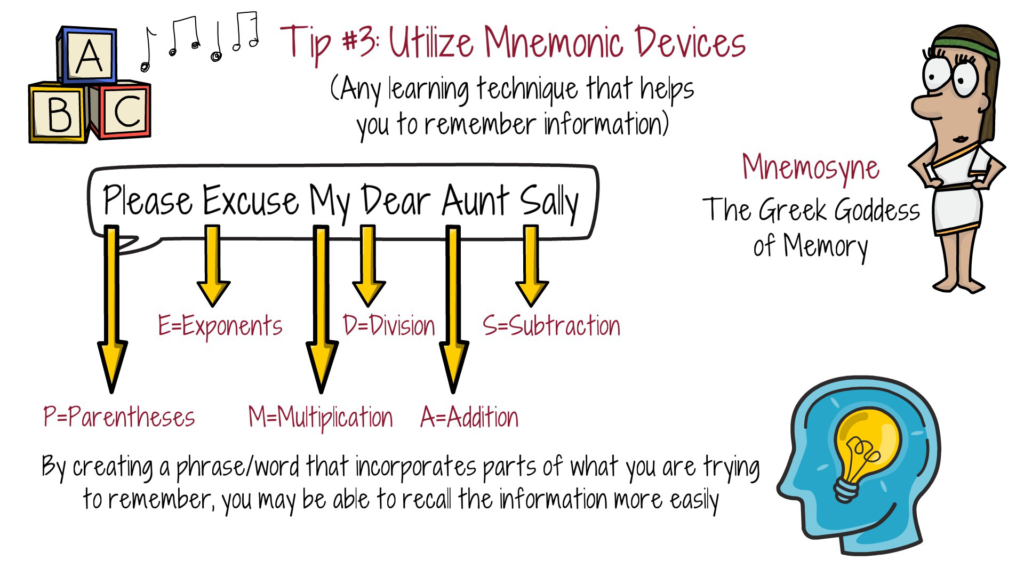
Other types of Mnemonic devices are things like acronyms and acrostics. By using the first letter of a word to create a sentence or something that sounds like a word, it can trigger your memory to remember a larger group of words. One sample could be the phrase, “Please Excuse My Dear Aunt Sally”. This can help you remember the computational order in math problems. P=Parentheses, E=Exponents, M=Multiplication, D=Division, A=Addition, and S=Subtraction. By memorizing the simple phrase, the order of operations can be easily recalled. By creating a phrase or word that incorporates parts of what you are trying to remember, you may be able to recall the information more easily.
Another memory tool you might try is called the “Method of Loci”, also known as the “Memory Palace Technique”, which has to do with remembering things in relation to their location. To use this method, create a list of things you want to remember. For example, let’s say you have a shopping list of apples, bird seed, a blue sweater, frozen corn and a phone charger. First, try visualizing your home and all of its rooms. Imagine an item from your list in each room. The more outlandish you create the picture in your mind, the more likely you are to remember it. For example, imagine walking into your home and seeing a basket of apples in the entryway. As you walk into the living room, you see a giant green parrot eating birdseed, wearing a blue sweater. You continue on into the kitchen and see the entire room filled with frozen corn. Phone chargers hanging from the ceiling complete the silly scene. This same method can be used for any group of items that you want to recall later. The brain remembers pictures better than abstract words and concepts. So this can be a very effective study tool.
Songs, rhymes, and chunking groups of numbers or items together are more examples of Mnemonic devices. There are plenty of fun and effective mnemonic ideas online to add to your study toolbox.
Tip #4: Prioritize Discipline over Motivation
Feeling motivated to do something can be helpful. But it’s not predictable. You might be excited about something for a while, but if you get tired or distracted, your motivation can start to disappear.
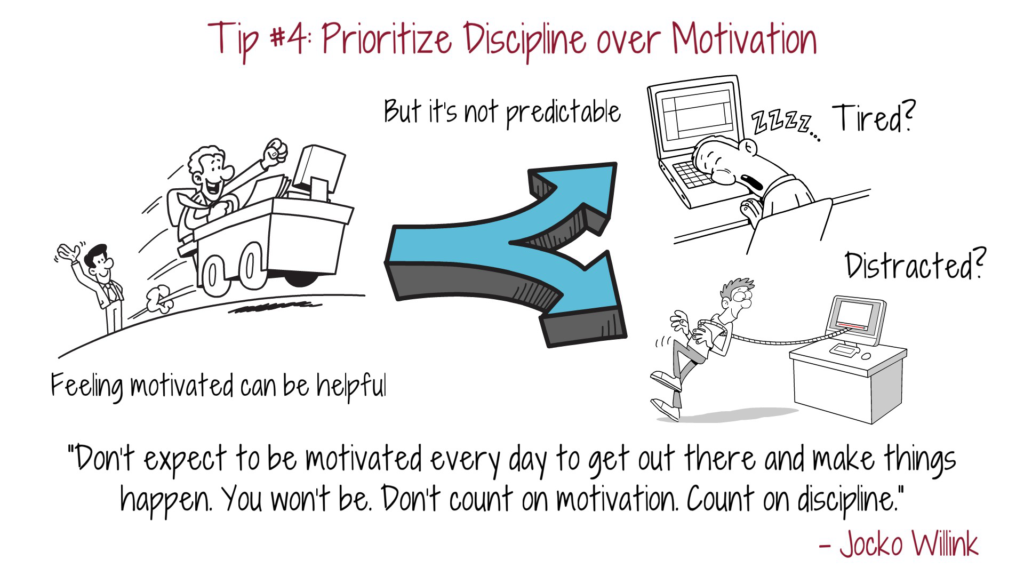
That’s when discipline comes in. Setting regular times to study, and doing it whether you feel like it or not, can help you stay on track and make progress.
Navy Seal Jocko Willink said,
“Don’t expect to be motivated every day to get out there and make things happen. You won’t be. Don’t count on motivation. Count on discipline.”
Tip #5: Combine Information and Knowledge
Learning something is more than just remembering facts and figures. It’s making sense of how it all fits together. Spaced repetition, Mnemonics, and other methods of studying are all good ways to help remember information. But memorizing something and understanding it can be two different things.
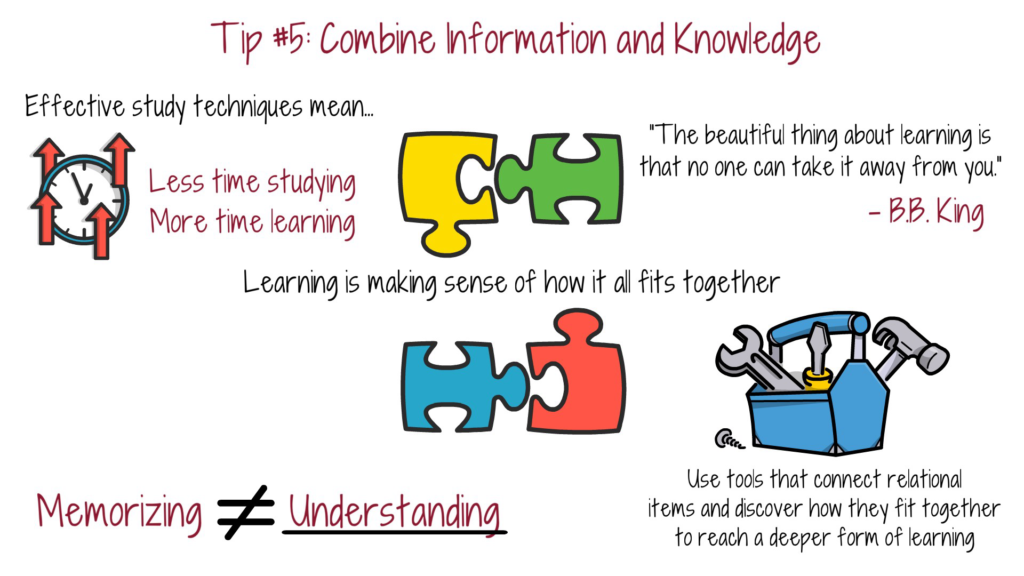
Understanding what you are learning is an important component of studying. Use tools that connect relational items and discover how they fit together to reach a deeper form of learning. For example, it’s not enough for a scientist to know that chemicals react. They need to know how and why, to interpret the results.
By using effective study techniques you may be able to spend less time studying, and more time learning. By storing information in your long term memory, you can use those thoughts to expand your knowledge and build on it.
Musician B.B. King said,
“The beautiful thing about learning is that no one can take it away from you.”
